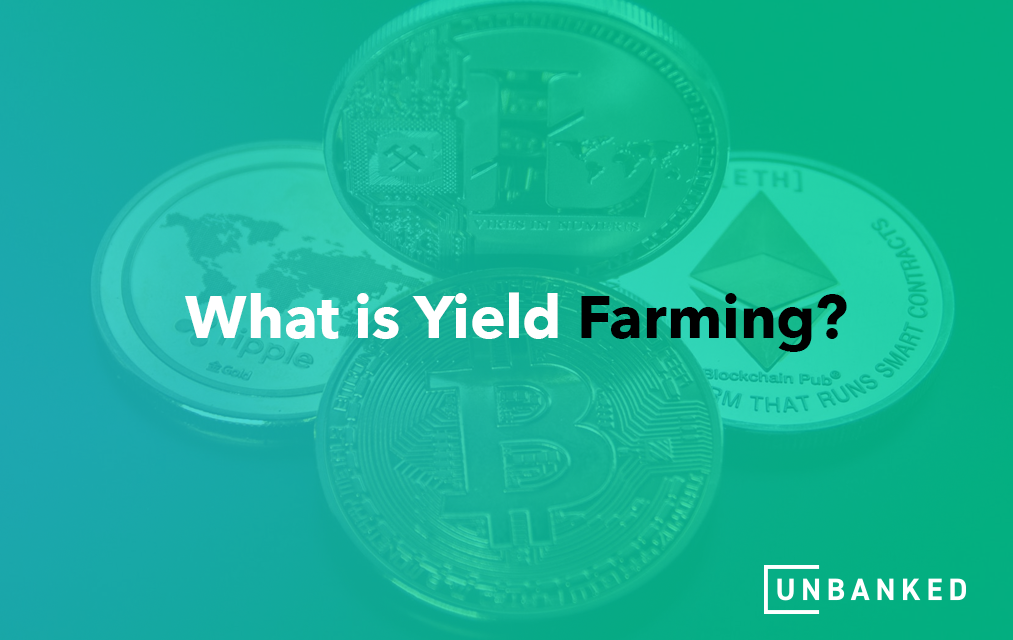Yield farming is an investment strategy that exposes investors to all of the nuances and risks involved with decentralized finance (DeFi). Yield farming involves staking or lending your crypto assets (tokens or coins) on DeFi platforms and earning crypto rewards in exchange for the platforms’ services. Essentially, yield farming allows crypto investors to maximize their returns when spending their crypto, while the process also offers liquidity to several token pairs.
Also called liquidity mining, yield farming allows you to lend your funds to others through smart contracts. In exchange, the DeFi platform provides you with fees and favorable interest in the form of cryptocurrency. Giving money to make more money is the name of the game. To maximize their returns, some yield farmers will regularly move their crypto assets among various DeFi platforms. And, there is some amount of secrecy involved with yield farming strategies, especially considering how wild the DeFi space can be. Here’s a deeper breakdown of how to yield farming and DeFi work.
Exploring the World of Decentralized Finance
Decentralized finance has been gaining momentum because of its lack of third-party involvement or a middleman to approve transactions. DeFi has been spearheading the blockchain technology movement as DeFi applications are permissionless, allowing anyone with an internet connection and a supported crypto wallet to interact with them. With the lack of custodians and the protective layers offered, decentralized finance has become a more attractive way of doing business for investors. The DeFi platform market size is expected to reach the $508 million mark by 2028.
DeFi is a trustless concept, putting more control in the hands of users. Yield farming is one of the newer concepts involved in DeFi, allowing users to earn countless rewards with crypto holdings using permissionless liquidity protocols. You can earn passive income using a decentralized ecosystem built on Ethereum (ETH). Yield farming is usually done using ERC-20 tokens, with the subsequent rewards typically involving the same tokens.
Instead of keeping your crypto assets idle, yield farming allows you to put those assets to work and maximize them.
Yield Farming and Liquidity
In several cases, yield farming correlates with liquidity providers that add funds to different liquidity pools. A liquidity pool is a smart contract containing funds. When providing liquidity to the pool, the pools get rewards with the rewards coming from fees generated by underlying DeFi platforms or an alternate source. Liquidity pools often pay their rewards in multiple tokens that might be deposited to other liquidity pools to earn further rewards. Liquidity is central to any successful yield farming strategy.
De-Fi platforms typically offer alternative economic incentives to attract extra capital to their platforms. Much like with centralized exchanges, the liquidity in decentralized exchanges tends to attract more liquidity.
Other Ways of Yield Farming
Another yield farming strategy that investors use is staking. Staking can be accomplished in two ways. The most common way is through proof-of-stake blockchains, where users are paid interest to pledge their crypto assets to the De-Fi network to provide additional security. Alternatively, users can stake liquidity pool tokens earning from supplying a decentralized exchange with liquidity. As a result, users can earn yield twice because they’re paid for supplying liquidity in liquidity pool tokens, allowing them to maximize their earning potential.
When borrowing during yield farming, users use a crypto token as collateral, then receive a loan of a separate token, earning yield on the borrowed coins while holding their initial token and reaping the value benefits of it. By contrast, the lending process involves coin/token holders lending crypto assets to borrowers via smart contracts, earning yield from the interest paid on loan.
How Can You Measure the Success of Yield Farming?
A metric that yield farmers can use to measure the success of this De-Fi methodology is by establishing the Total Value Locked (TVL). The total value locked measures how much cryptocurrency is locked within decentralized finance lending and other money marketplaces.
The TVL is the aggregate liquidity in liquidity pools, an index for measuring the health of yield farming and DeFi as a whole. Additionally, the TVL metric compares different DeFi protocol market shares. One source you can use to track the total value locked is DeFi Pulse. This leaderboard allows you to check which platforms have the most Ethereum or other cryptocurrencies locked within decentralized finance, giving users a clear overview of the state of the yield farming market.
The more that value is locked, the more that yield farming takes place. You can measure the total locked value in ETH, Bitcoin, or American dollars. Each of the currencies gives users different outlooks on the state of yield farming markets.
How Do You Calculate Yield Farming Returns?
Usually, estimated yield farming returns are calculated annualized, helping yield farmers to get an idea of the returns that they will get over the course of a year.
Annual percentage yield (APY) and annual percentage rate (APR) are the two metrics used to calculate yield farming returns. The annual percentage rate does not factor in compounding, while the annual percentage yield includes it. Compounding is the process of directly reinvesting profits to generate higher returns. However, you should be aware that APY and APR are commonly used interchangeably within the yield farming spectrum. Also, keep in mind that the returns calculated are projections and estimates, with short-term rewards sometimes hard to precisely measure. The difficulty in measuring returns is that yield farming is a highly competitive market with the rewards constantly fluctuating in value. If your strategy works for the longer term, other yield farmers will jump into the marketplace, concentrating it and reducing the potential returns you can accumulate.
The best yield farming strategies are highly complex and layered, typically recommended for people who have a higher capital to deploy. Also, any collateral that you use for yield farming can be liquidated, further putting your investment at risk.
Want to know more about yield farming and all the elements of decentralized finance. Check out our resources to learn more best practices of DeFi and how you can maximize your yield.





